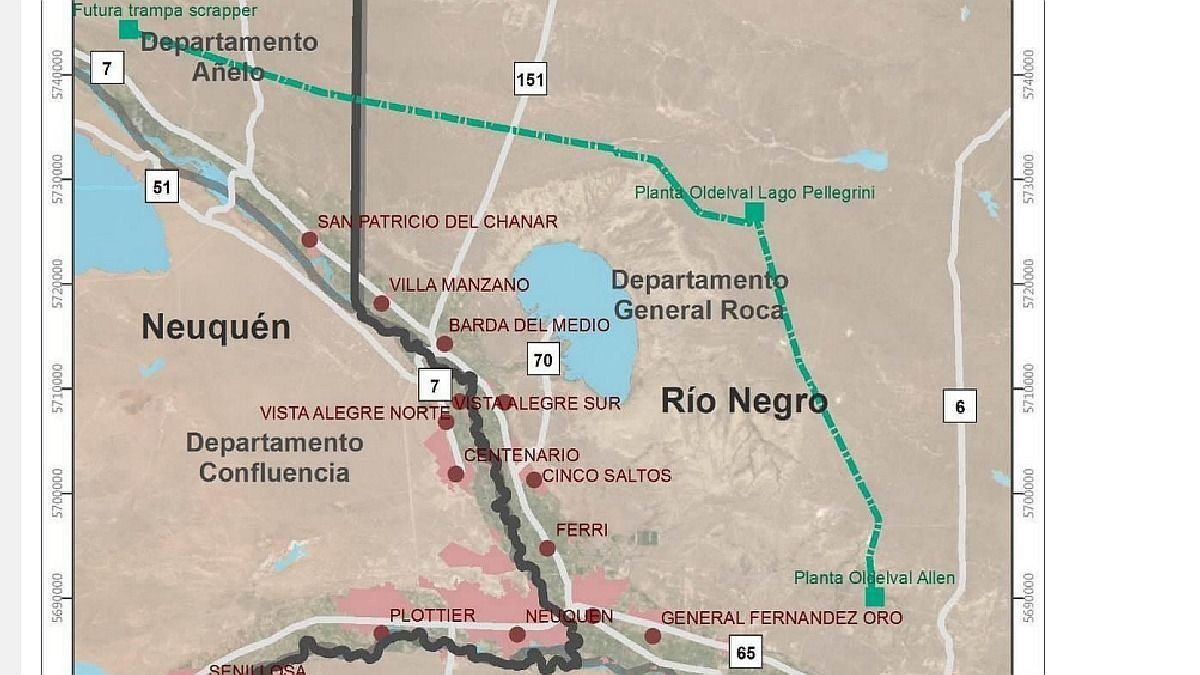By Shell, will be present Paul Goodfellowexecutive vice president of the Deep Water division, in charge of Shell’s Global portfolio in Deep Water, and president of Shell Argentina, Ricardo Rodriguez.
What is the new pipeline about?
He pipeline105 kilometers long and 16 inches in diameter, will link the oil production area White SierrasShell’s heart of operations in Dead cow, with the pumping station located in the Río Negro town of Allen. It will also receive contributions from the blocks Cruz de Lorraine and Coirón Amargo South West.
The work, which required some US$80 million private investment, was carried out in two sections, the first of about 60 kilometers to Lake Pellegrini, and the second to Allen, with 40 more kilometers. The pipeline will have the capacity to transport up to 125,000 barrels of oil per day and, in addition to Shell, it may be used by third-party operators who want to contract its use.
image.png
The work will make it possible to expand the current network, pave the way to increase production and facilitate the evacuation of crude oil to refineries in the province of Buenos Aires and export points, by relieving the existing bottleneck in the midstream infrastructure due to the strong increase in production that occurred in Dead cow. It is worth noting that within the oil production chain, the midstream phase includes transportation as well as storage and wholesale marketing, after exploration and production (upstream) and before distribution, refining and sale (downstream).
According to official data, Argentina closed 2022 with “historical maximum oil production”. A total of 622,500 barrels per day was the December production, which represents the highest total production since 2009. In particular, shale oil contributed 282,400 barrels per day and set a new historical record. In this way, the volume of unconventional was 2.1% higher than that of the immediately previous month and crystallized an increase of 32.9% compared to the production of the same month in 2021. Taking only the case of Shell, production went from between 6,000 and 8,000 barrels daily in 2018 to about 45,000 currently.
Who made the pipeline
The consortium is made up of Shell Argentinaas successful bidder and leader (with a 60% stake), Pan American Energy (25%) and pluspetrol (fifteen%); and the construction was in charge of Techint-SIMA. For its part, the operation of the pipeline will be Valley Pipelines (Oldelval).
image.png

More than 50 contractors and suppliers were involved in the work, mostly of national and regional origin. A consortium source revealed that 80% of the participants in the project are from Neuquén and Río Negro, in line with the norms of “buy local” and Shell’s commitment to hiring labor and contractors from the region to promote local development.
How the pipeline will operate
The project, which will be formally inaugurated on Tuesday, but which has already been in operation since the end of last year, was built in a record time of only nine months and It is Shell’s first investment in the midstream in its 108 years of presence in the country.
Shell has invested more than u$s2,000 million in Dead cow with more than 100 wells drilled in Vaca Muerta and, only in 2022, overturned $500 million in the development of training resources, the company indicated to this medium. In his operation White Sierrashas two processing plants with a combined capacity of 42,000 barrels per dayand generates more than 3,000 direct and indirect jobs. mmore than 50% of its inputs, goods and services are of national origin.
Dead Cow Wells Shell.jpg

The oil pipeline to be inaugurated by the company will be linked in Allen with the main oil pipeline that receives oil from the Neuquén Basin and is operated Oldelval, a concessionaire firm that plans to invest US$750 million in its Duplicate Project. This pipeline allows oil to be evacuated from Vaca Muerta to the refineries -for its use in the local market- and to the exploitation points.
What is the Duplicate Project
He Project Duplicate plans to bring the current transport capacity of 36,000 cubic meters per day to 86,000 cubic meters, equivalent to 540,940 barrels per day, with the construction of 455 kilometers of 24-inch pipes between the Allen and Saligral pumping stations. This initiative includes changing the layout of 70 km of pipelines in the Bahía Blanca area and the repowering of four pumping stations.
Once the expansion of the trunk pipeline is completed -which includes a new terminal station in Puerto Rosales in Bahía Blanca-, the country’s oil exports may increase to between 230,000 and 320,000 barrels per day, equivalent to an annual foreign exchange income of between u$s5,000 million and u$s8,000 million.
The Oldelval project is already underway with the arrival of the first pipes and the assembly of the workshop last October, and it will be carried out in two phases, with an estimated work period of 22 months.
Source: Ambito




